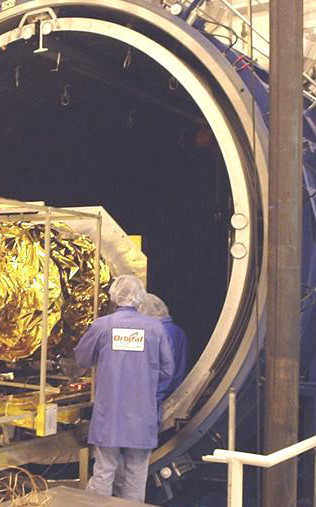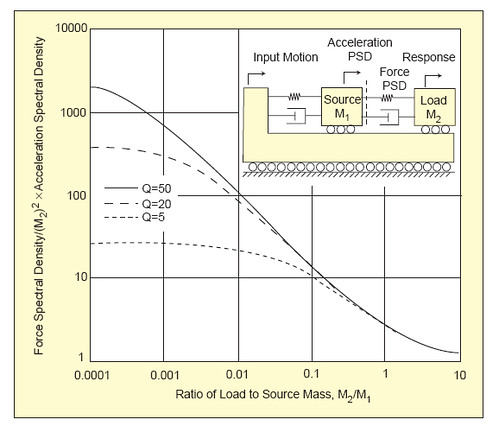CHIRP Baked, Ready to Shake

The Commercially Hosted Infrared Payload (CHIRP), set to piggy-back on the SES-2 spacecraft later this year, passed thermal vacuum chamber testing. According to DefPro, all is nominal and you can’t get any better than that in the space business…
SES-USG today announced that the Commercially Hosted Infrared Payload (CHIRP) and its host spacecraft, SES-2, have completed thermal vacuum (TVAC) testing.
The experimental wide field-of-view sensor was designed by Science Applications International Corporation (SAIC) for the U.S. Air Force Space and Missile Systems Center. After integration onto the SES-2 spacecraft, built by Orbital Sciences Corp., the TVAC tests were conducted to demonstrate the sensor’s ability to withstand the space environment it will experience following the launch this August. A preliminary review of the test data indicates the CHIRP payload thermal performance was as expected.
Victoria Kennedy, CHIRP Program Manager at SES noted, “The TVAC was a key milestone for CHIRP, and puts the program well on track for the remaining environmental tests.”
The TVAC is one of a series of recent successful tests completed by the CHIRP program. In January, the payload was integrated onto the SES-2 spacecraft and passed what is known as the initial post-mate electrical checkout. Following this milestone, an integrated ground-to-payload test was completed where the sensor was commanded from SAIC’s Mission Analysis Center in Seal Beach, CA through Orbital’s Mission Operations Center in Dulles, VA. Through this process, payload data, including images and state-of-health data were successfully transmitted. This demonstration was a key risk reduction activity in the development and testing of the CHIRP Ground Segment.
Brent Armand, CHIRP Program Manager at Orbital Sciences Corporation remarked, “The team is very pleased with the payload performance during TVAC. We are all systems go as we look forward to the upcoming vibration test campaign and the near-term completion and delivery of the SES-2 spacecraft.”
To simulate the hot and cold extremes possible in space, the thermal vacuum chamber can reach temperatures in a 600-degree F range from 302° F all the way down to minus 310° F. Wow, the best we can do as humans on earth is the 300-degree Club in Antarctica.

What’s next? Vibration testing, which includes random vibration, base-drive modal and quasi-static load tests – all conducted while the spacecraft is mounted on a shaker.

This NASA video does an excellent job of explaining these critical tests…
Tags: chirp, hosted payload, saic, usaf